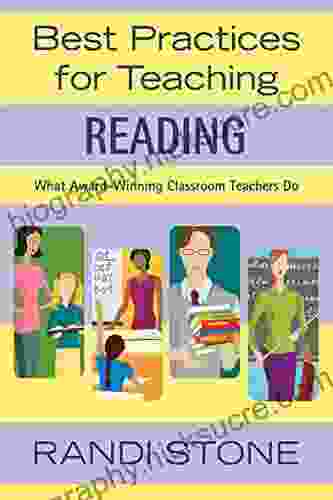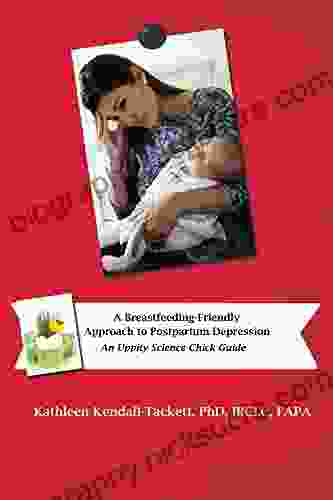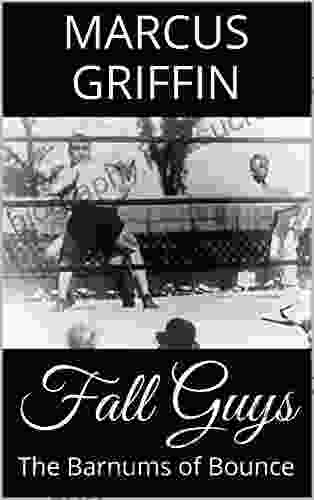Best Practices For Teaching Reading: A Comprehensive Guide

Literacy is a fundamental skill that unlocks countless opportunities for personal growth and academic success. As educators, it is our responsibility to equip students with the tools they need to become proficient readers. This article presents a comprehensive guide to best practices for teaching reading, covering essential components such as phonemic awareness, phonics, vocabulary, comprehension, motivation, and assessment.
4.6 out of 5
| Language | : | English |
| File size | : | 2944 KB |
| Text-to-Speech | : | Enabled |
| Screen Reader | : | Supported |
| Enhanced typesetting | : | Enabled |
| Word Wise | : | Enabled |
| Print length | : | 178 pages |
| Lending | : | Enabled |
1. Phonemic Awareness
Phonemic awareness refers to the ability to identify and manipulate individual sounds in spoken language. It is a critical foundation for learning to read and write. Best practices for teaching phonemic awareness include:
- Oral blending and segmenting: Practice blending individual sounds to form words (e.g., /c/ /a/ /t/ ="cat") and segmenting words into individual sounds (e.g., "dog" = /d/ /o/ /g/).
- Rhyming activities: Engage students in activities that identify rhyming words (e.g., "cat" and "hat") and create rhyming sentences.
- Sound manipulation games: Play games that involve manipulating sounds, such as changing the first sound in a word (e.g., "bat" to "cat") or adding or deleting sounds (e.g., "stop" to "stoplight").
2. Phonics
Phonics is the relationship between letters and sounds. It enables students to decode words by associating letter combinations with their corresponding sounds. Best practices for teaching phonics include:
- Explicit instruction: Teach letter-sound relationships systematically and explicitly, using flashcards, letter tiles, and other hands-on materials.
- Blended approach: Combine synthetic phonics (sounding out words from individual letters) with analytic phonics (identifying letter combinations and patterns in words).
- Multisensory activities: Engage students in multisensory activities that connect phonics to sight and sound, such as writing letters in sand or using magnetic letters.
3. Vocabulary
Vocabulary is the range of words known and understood by an individual. It is essential for comprehension and expression. Best practices for teaching vocabulary include:
- Exposure to rich language: Provide students with ample opportunities to encounter new words through reading, listening, and speaking.
- Explicit instruction: Define new words explicitly, using clear explanations and examples.
- Word walls and games: Create word walls and play vocabulary games to reinforce and review new words.
4. Comprehension
Comprehension is the ability to understand the meaning of written text. Best practices for teaching comprehension include:
- Text selection: Choose texts that are appropriate for students' reading level and interests.
- Pre-reading strategies: Activate prior knowledge and build background information before reading.
- During-reading strategies: Guide students through the text, asking questions and encouraging them to make connections.
- Post-reading activities: Engage students in discussions, writing activities, and projects that demonstrate their understanding of the text.
5. Motivation
Motivation is essential for fostering a love of reading and encouraging students to read independently. Best practices for motivating students to read include:
- Create a print-rich environment: Surround students with books, magazines, and other reading materials.
- Offer choice: Allow students to choose books that interest them, fostering their sense of ownership over their reading experience.
- Make reading a social activity: Encourage students to read together, share their favorite books, and discuss their thoughts and ideas.
6. Assessment
Assessment is an integral part of the teaching and learning process. It allows educators to monitor students' progress and make informed decisions about instruction. Best practices for assessing reading include:
- Reading fluency assessment: Measure students' ability to read smoothly, accurately, and with expression.
- Comprehension assessment: Assess students' understanding of text through a variety of methods, such as comprehension questions, short answer responses, and essays.
- Diagnostic assessment: Use assessments to identify areas where students need additional support and tailor instruction accordingly.
Effective reading instruction is a complex and multi-faceted endeavor. By implementing the best practices outlined in this article, educators can empower students to become lifelong, proficient readers. Remember, the journey to literacy is a collaborative one, involving the active participation of students, teachers, and the wider community. By working together, we can ensure that every child has the opportunity to experience the joy and power of reading.
4.6 out of 5
| Language | : | English |
| File size | : | 2944 KB |
| Text-to-Speech | : | Enabled |
| Screen Reader | : | Supported |
| Enhanced typesetting | : | Enabled |
| Word Wise | : | Enabled |
| Print length | : | 178 pages |
| Lending | : | Enabled |
Do you want to contribute by writing guest posts on this blog?
Please contact us and send us a resume of previous articles that you have written.
 Fiction
Fiction Non Fiction
Non Fiction Romance
Romance Mystery
Mystery Thriller
Thriller SciFi
SciFi Fantasy
Fantasy Horror
Horror Biography
Biography Selfhelp
Selfhelp Business
Business History
History Classics
Classics Poetry
Poetry Childrens
Childrens Young Adult
Young Adult Educational
Educational Cooking
Cooking Travel
Travel Lifestyle
Lifestyle Spirituality
Spirituality Health
Health Fitness
Fitness Technology
Technology Science
Science Arts
Arts Crafts
Crafts DIY
DIY Gardening
Gardening Petcare
Petcare Mina Lebitz
Mina Lebitz Ben Goldacre
Ben Goldacre David Klausmeyer
David Klausmeyer Thomas Bulfinch
Thomas Bulfinch Baruch Englard
Baruch Englard Barbara Bassot
Barbara Bassot Tim Marshall
Tim Marshall Linnea Dunne
Linnea Dunne Barry Rhodes
Barry Rhodes Geert Hofstede
Geert Hofstede Muhammad Zulqarnain
Muhammad Zulqarnain Joseph Epes Brown
Joseph Epes Brown Constanze Niedermaier
Constanze Niedermaier Lynn Mann
Lynn Mann Gabriyell Sarom
Gabriyell Sarom Mark Kurlansky
Mark Kurlansky Holger Schutkowski
Holger Schutkowski Vanessa Ogden Moss
Vanessa Ogden Moss Paul Doiron
Paul Doiron Rick Joyner
Rick Joyner C R Hallpike
C R Hallpike P J Agness
P J Agness Michelle Rigler
Michelle Rigler Jessica F Shumway
Jessica F Shumway Prince Asare
Prince Asare Diane Musho Hamilton
Diane Musho Hamilton Mark Rashid
Mark Rashid Mykel Hawke
Mykel Hawke Jenna Helland
Jenna Helland Suzanne Leonhard
Suzanne Leonhard Bagele Chilisa
Bagele Chilisa Debbie M Schell
Debbie M Schell Richard H Immerman
Richard H Immerman J Michael Veron
J Michael Veron Jeff Belanger
Jeff Belanger Charlotte Browne
Charlotte Browne James Randi
James Randi Brandon Royal
Brandon Royal Martin Dugard
Martin Dugard Larry Dane Brimner
Larry Dane Brimner Robin Mcmillan
Robin Mcmillan Margaret Owen
Margaret Owen John H Mcwhorter
John H Mcwhorter Boy Scouts Of America
Boy Scouts Of America Mike Massie
Mike Massie David A Bogart
David A Bogart Ray Comfort
Ray Comfort Scott Mactavish
Scott Mactavish Edward Lee
Edward Lee Jean Illsley Clarke
Jean Illsley Clarke Meghan L Marsac
Meghan L Marsac Lily Collins
Lily Collins Cheryl Erwin
Cheryl Erwin Eric Engle
Eric Engle Charles River Editors
Charles River Editors John G Robertson
John G Robertson Arnold G Nelson
Arnold G Nelson Cynthia Levinson
Cynthia Levinson Melissa Haag
Melissa Haag T C Edge
T C Edge Helen Kara
Helen Kara Eddie Merrins
Eddie Merrins William Wasserman
William Wasserman James Kilgo
James Kilgo Guy P Harrison
Guy P Harrison Peter K Tyson
Peter K Tyson Thomas Lumley
Thomas Lumley J Bruce Brackenridge
J Bruce Brackenridge Craig Lambert
Craig Lambert Peter Martin
Peter Martin Mike Swedenberg
Mike Swedenberg Glenna Mageau
Glenna Mageau Blair Braverman
Blair Braverman Cindy Post Senning
Cindy Post Senning Stephen J Bavolek
Stephen J Bavolek Kathleen Masters
Kathleen Masters Sampson Davis
Sampson Davis Vanessa Garbin
Vanessa Garbin James Duthie
James Duthie Mike Loades
Mike Loades Steven Rinella
Steven Rinella Sam Harris
Sam Harris Brad Burns
Brad Burns Ben Sedley
Ben Sedley Leonard M Adkins
Leonard M Adkins Barbara Gastel
Barbara Gastel Matt Taddy
Matt Taddy Jeff Alt
Jeff Alt Mark Twain
Mark Twain Temple West
Temple West Ryan T White
Ryan T White Charlie Shamp
Charlie Shamp Jonathan Kellerman
Jonathan Kellerman Joshua G Shifrin
Joshua G Shifrin Mackenzi Lee
Mackenzi Lee Erica Schultz
Erica Schultz Scott Malthouse
Scott Malthouse Jake Anderson
Jake Anderson Denton Salle
Denton Salle Nichole Carpenter
Nichole Carpenter Bernard Marr
Bernard Marr Dr Michael P Masters
Dr Michael P Masters Hongyu Guo
Hongyu Guo Chris Cage
Chris Cage Barbara Neiman
Barbara Neiman Steven Hawthorne
Steven Hawthorne Violet Moller
Violet Moller Randy Baker
Randy Baker Lynn Rosen
Lynn Rosen Erica B Marcus
Erica B Marcus Mark Mayfield
Mark Mayfield Farzana Nayani
Farzana Nayani Barry Johnston
Barry Johnston Molly E Lee
Molly E Lee Jade Barrett
Jade Barrett Jamie Margolin
Jamie Margolin Noah Brown
Noah Brown Beebe Bahrami
Beebe Bahrami Nadine Hays Pisani
Nadine Hays Pisani Jim Fay
Jim Fay Ascencia
Ascencia Mike High
Mike High Daniel T Willingham
Daniel T Willingham Richard Weissbourd
Richard Weissbourd Erik J Brown
Erik J Brown Robert Hogan
Robert Hogan Mike Allison
Mike Allison Shayla Black
Shayla Black Linda Carroll
Linda Carroll Janis Keyser
Janis Keyser William H Frey
William H Frey Charles Soule
Charles Soule Chris Bennett
Chris Bennett Anthony Edwards
Anthony Edwards Graham Farmelo
Graham Farmelo Marco Grandis
Marco Grandis Deanna Roy
Deanna Roy Laura Ingalls Wilder
Laura Ingalls Wilder Barry Burd
Barry Burd Ben Collins
Ben Collins Susan Dennard
Susan Dennard Susan Nance
Susan Nance Rob Rains
Rob Rains Betty Stone
Betty Stone Eric Leiser
Eric Leiser Timothy Pakron
Timothy Pakron Michael Palin
Michael Palin Marc Loy
Marc Loy Kate Williams
Kate Williams John Whitman
John Whitman Susan Scott
Susan Scott Monta Z Briant
Monta Z Briant Patrick Sweeney
Patrick Sweeney Tom Miller
Tom Miller Colleen Alexander Roberts
Colleen Alexander Roberts Mark Young
Mark Young Mitch Prinstein
Mitch Prinstein Barry Glassner
Barry Glassner Samantha Fitts
Samantha Fitts Mia Scotland
Mia Scotland Chase Hill
Chase Hill Fabien Clavel
Fabien Clavel Robin Nixon
Robin Nixon Lewis Thomas
Lewis Thomas Jean Smith
Jean Smith Cary J Griffith
Cary J Griffith Charlotte Booth
Charlotte Booth David Beaupre
David Beaupre Jeremy Sweet
Jeremy Sweet Geoffrey Finch
Geoffrey Finch Conor Nolan
Conor Nolan Barbara Illowsk
Barbara Illowsk Cara Koscinski
Cara Koscinski Reprint Edition Kindle Edition
Reprint Edition Kindle Edition Rachel Dash
Rachel Dash David Cockburn
David Cockburn Eugene V Resnick
Eugene V Resnick Kit Yates
Kit Yates Sergei Urban
Sergei Urban Sean Mcindoe
Sean Mcindoe Eric Franklin
Eric Franklin Kate Darling
Kate Darling W Hamilton Gibson
W Hamilton Gibson Jutta Schickore
Jutta Schickore Arny Alberts
Arny Alberts Donald R Gallo
Donald R Gallo Leon Mccarron
Leon Mccarron Ian Leslie
Ian Leslie Bb
Bb Bashir Hosseini Jafari
Bashir Hosseini Jafari Linda Welters
Linda Welters Rachel Smith
Rachel Smith Debra Kilby
Debra Kilby S K Gupta
S K Gupta Janna Levin
Janna Levin John D Barrow
John D Barrow Print Replica Kindle Edition
Print Replica Kindle Edition David Taylor
David Taylor Nancy E Willard
Nancy E Willard Charles Buist
Charles Buist Bryan Peterson
Bryan Peterson Brian Switek
Brian Switek Max Marchi
Max Marchi Daniel J Barrett
Daniel J Barrett Christine Kenneally
Christine Kenneally Bridget Flynn Walker Phd
Bridget Flynn Walker Phd Dr Craig Malkin
Dr Craig Malkin Beau Miles
Beau Miles John Kimantas
John Kimantas Julie Buxbaum
Julie Buxbaum Crystal Duffy
Crystal Duffy Editors Of Southern Living Magazine
Editors Of Southern Living Magazine Leah Cullis
Leah Cullis Jen Houcek
Jen Houcek Kindle Edition
Kindle Edition Ron Lemaster
Ron Lemaster Julie L Spencer
Julie L Spencer Diane Cardwell
Diane Cardwell James C Radcliffe
James C Radcliffe Khurshed Batliwala
Khurshed Batliwala Robert Ardrey
Robert Ardrey Barbara Kennard
Barbara Kennard Ken Xiao
Ken Xiao Daniel S Lobel Phd
Daniel S Lobel Phd Yuval Noah Harari
Yuval Noah Harari Nick Neely
Nick Neely Victor Seow
Victor Seow Catherine Shainberg
Catherine Shainberg Smart Reads
Smart Reads Ping Li
Ping Li Basudeb Bhatta
Basudeb Bhatta Oliver T Spedding
Oliver T Spedding Jane Hardwicke Collings
Jane Hardwicke Collings James M Collins
James M Collins Edwin R Sherman
Edwin R Sherman Beth Miller
Beth Miller Leslie Stager
Leslie Stager Carlo Collodi
Carlo Collodi Alastair Hannay
Alastair Hannay Julian I Graubart
Julian I Graubart Rowan Jacobsen
Rowan Jacobsen Sam Kean
Sam Kean Harvey Wittenberg
Harvey Wittenberg Jim Wharton
Jim Wharton Emma Brockes
Emma Brockes James Duggan
James Duggan Richard J Dewhurst
Richard J Dewhurst Kenton Kroker
Kenton Kroker Jesse Liberty
Jesse Liberty Shannon Reilly
Shannon Reilly Basu Shanker
Basu Shanker Beau Bradbury
Beau Bradbury Ronald Wheeler
Ronald Wheeler David Starbuck Smith
David Starbuck Smith Chris Mooney
Chris Mooney Leia Stone
Leia Stone Helen Fisher
Helen Fisher Chadd Vanzanten
Chadd Vanzanten Percy Boomer
Percy Boomer Mark Ellyatt
Mark Ellyatt Melissa Gomes
Melissa Gomes Dr Faith G Harper
Dr Faith G Harper Barzin Pakandam
Barzin Pakandam Stefan Ecks
Stefan Ecks Casey Watson
Casey Watson Benita Bensch
Benita Bensch Joseph Schmuller
Joseph Schmuller Reelav Patel
Reelav Patel Fred Mitchell
Fred Mitchell Nicholas Wolterstorff
Nicholas Wolterstorff Jack Newman
Jack Newman James Koeper
James Koeper Catherine J Allen
Catherine J Allen Stephanie Fritz
Stephanie Fritz Barbara Mertz
Barbara Mertz George Macdonald
George Macdonald Becca Anderson
Becca Anderson Steve Burrows
Steve Burrows Jane Butel
Jane Butel Sport Hour
Sport Hour Visual Arts
Visual Arts Barbara Taylor
Barbara Taylor Philip Maffetone
Philip Maffetone Toby A H Wilkinson
Toby A H Wilkinson Marie Rutkoski
Marie Rutkoski Malcolm Hebron
Malcolm Hebron Danny Staple
Danny Staple David Jamieson Bolder
David Jamieson Bolder Suzanne Wylde
Suzanne Wylde Steve Biddulph
Steve Biddulph Lew Freedman
Lew Freedman Dave Rearwin
Dave Rearwin Jude Currivan
Jude Currivan Christopher L Heuertz
Christopher L Heuertz Alexandra Andrews
Alexandra Andrews Nicholas Sparks
Nicholas Sparks Bobbie Faulkner
Bobbie Faulkner Joshua Hammer
Joshua Hammer Jennifer Estep
Jennifer Estep Richard Harris
Richard Harris Jenn Mcallister
Jenn Mcallister Stephen K Sanderson
Stephen K Sanderson Dan Golding
Dan Golding Robin Knox Johnston
Robin Knox Johnston Bruce Pascoe
Bruce Pascoe Steven Bell
Steven Bell Paul Van Lierop
Paul Van Lierop Sharon Dukett
Sharon Dukett Karen Bush
Karen Bush David Burch
David Burch Edith Grossman
Edith Grossman Grey Owl
Grey Owl Mike Stanton
Mike Stanton Peter Wacht
Peter Wacht Brian Gilbert
Brian Gilbert Cait Stevenson
Cait Stevenson Tori Day
Tori Day Mary A Fristad
Mary A Fristad R L Medina
R L Medina Spencer Wells
Spencer Wells Ernie Morton
Ernie Morton Gay Robins
Gay Robins Chris Eberhart
Chris Eberhart Richard Meadows
Richard Meadows Gerald Beaudry
Gerald Beaudry John Lister Kaye
John Lister Kaye Hunbatz Men
Hunbatz Men Scarlett Thomas
Scarlett Thomas Richard Chun
Richard Chun Jenny Chandler
Jenny Chandler Donald Frias
Donald Frias Isabel Fonseca
Isabel Fonseca Catherine M Cameron
Catherine M Cameron Mark H Newman
Mark H Newman Lawrence Baldassaro
Lawrence Baldassaro Graham R Gibbs
Graham R Gibbs Sam Nadler
Sam Nadler Stan Tekiela
Stan Tekiela Buddy Levy
Buddy Levy Achille Rubini
Achille Rubini Emma Walker
Emma Walker Barry Rabkin
Barry Rabkin Elliott Vandruff
Elliott Vandruff Justin Sirois
Justin Sirois Kyle Butler
Kyle Butler Joseph Alton M D
Joseph Alton M D Frederick Douglass Opie
Frederick Douglass Opie Jennifer Pharr Davis
Jennifer Pharr Davis Valerie Pollmann R
Valerie Pollmann R Yang Kuang
Yang Kuang Simon Spurrier
Simon Spurrier Sam Cowen
Sam Cowen Autumn Carpenter
Autumn Carpenter Diane Yancey
Diane Yancey John J Robinson
John J Robinson Dave Karczynski
Dave Karczynski Jack Andraka
Jack Andraka Jessica Smartt
Jessica Smartt Rebecca Solnit
Rebecca Solnit Ralph Galeano
Ralph Galeano Siddhartha Rao
Siddhartha Rao Pavla Kesslerova
Pavla Kesslerova Bonnie Tsui
Bonnie Tsui Jill Brown
Jill Brown Monica Hesse
Monica Hesse Pearson Education
Pearson Education John Quick
John Quick Jaymin Eve
Jaymin Eve Rob Hutchings
Rob Hutchings David Abram
David Abram Christopher Taylor Ma Lmft
Christopher Taylor Ma Lmft Clayton King
Clayton King Hill Gates
Hill Gates J C Cervantes
J C Cervantes Joanna Hunt
Joanna Hunt Stanislas Dehaene
Stanislas Dehaene Craig Romano
Craig Romano Nicole Martin
Nicole Martin Ben Povlow
Ben Povlow Lock Gareth
Lock Gareth Roy Porter
Roy Porter Allan V Horwitz
Allan V Horwitz Ryan Higa
Ryan Higa Chuck Missler
Chuck Missler Scott Reed
Scott Reed Dustin Hansen
Dustin Hansen Nick Townsend
Nick Townsend Titus M Kennedy
Titus M Kennedy Wanda Priday
Wanda Priday F William Lawvere
F William Lawvere Tim Ingold
Tim Ingold Tami Anastasia
Tami Anastasia Gordon H Chang
Gordon H Chang Dustin Salomon
Dustin Salomon Macauley Lord
Macauley Lord Emily Chappell
Emily Chappell Kara Tippetts
Kara Tippetts Ellen Lewin
Ellen Lewin Mick Conefrey
Mick Conefrey Barry J Kemp
Barry J Kemp Ellen Notbohm
Ellen Notbohm Sara Shepard
Sara Shepard Burt L Standish
Burt L Standish Daniel P Huerta
Daniel P Huerta Joanne Glenn
Joanne Glenn Maha Alkurdi
Maha Alkurdi Richard Scott
Richard Scott Yuki Mano
Yuki Mano Michael Wood
Michael Wood V B Alekseev
V B Alekseev Rebecca Rupp
Rebecca Rupp Ron Avery
Ron Avery James Syhabout
James Syhabout Luke Gilkerson
Luke Gilkerson Bob Holtzman
Bob Holtzman Martin Sternstein
Martin Sternstein Jennifer Traig
Jennifer Traig Wayne B Chandler
Wayne B Chandler Jonathan Bergmann
Jonathan Bergmann Barry Friedman
Barry Friedman Robert A Baruch Bush
Robert A Baruch Bush Rob Pope
Rob Pope S E Hinton
S E Hinton Rhonda Belle
Rhonda Belle Barbara Rogoff
Barbara Rogoff Kam Knight
Kam Knight Thomas French
Thomas French John Garrity
John Garrity Farley Mowat
Farley Mowat Roanne Van Voorst
Roanne Van Voorst John Aldridge
John Aldridge Tara Brach
Tara Brach Ryan A Pedigo
Ryan A Pedigo Jeffrey Jensen Arnett
Jeffrey Jensen Arnett William Byers
William Byers Hollis Lance Liebman
Hollis Lance Liebman Pat Shipman
Pat Shipman Laura Pavlov
Laura Pavlov David Aretha
David Aretha David Thomas
David Thomas Barbara Ann Kipfer
Barbara Ann Kipfer Daniel M Koretz
Daniel M Koretz Breanna Hayse
Breanna Hayse Gordon Witteveen
Gordon Witteveen Jayanti Tambe
Jayanti Tambe Master Gamer
Master Gamer Marshall Jon Fisher
Marshall Jon Fisher Shmuel Peerless
Shmuel Peerless Elizabeth George Speare
Elizabeth George Speare Massimo Cossu Nicola Pirina
Massimo Cossu Nicola Pirina Vincent Bossley
Vincent Bossley W Scott Elliot
W Scott Elliot Scott Westerfeld
Scott Westerfeld Babu The Panda
Babu The Panda Proper Education Group
Proper Education Group Bill Mckibben
Bill Mckibben Elizabeth Lockwood
Elizabeth Lockwood Dan R Lynch
Dan R Lynch Rachelle Zukerman
Rachelle Zukerman Gary Lincoff
Gary Lincoff T H White
T H White Dacher Keltner
Dacher Keltner Kara Goucher
Kara Goucher Bill Milliken
Bill Milliken John Henry Phillips
John Henry Phillips Chiara Sparks
Chiara Sparks Jay Abramson
Jay Abramson Barbara Russell
Barbara Russell Rachel Morgan
Rachel Morgan Kenneth Wilgus Phd
Kenneth Wilgus Phd John C Norcross
John C Norcross Otto Scharmer
Otto Scharmer Gary Soto
Gary Soto St Louis Post Dispatch
St Louis Post Dispatch Howard Zinn
Howard Zinn Candice Davie
Candice Davie Trish Kuffner
Trish Kuffner Clifford Herriot
Clifford Herriot Mike Commito
Mike Commito John Sandford
John Sandford Craig Martin
Craig Martin Eliza Reid
Eliza Reid Nina Manning
Nina Manning Nick Bollettieri
Nick Bollettieri
Light bulbAdvertise smarter! Our strategic ad space ensures maximum exposure. Reserve your spot today!
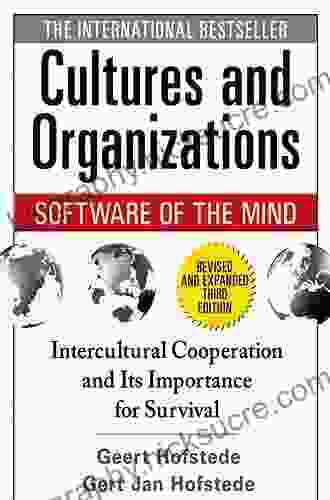
 Dashawn HayesUnlocking the Power of the Mind: A Comprehensive Review of Software of the...
Dashawn HayesUnlocking the Power of the Mind: A Comprehensive Review of Software of the...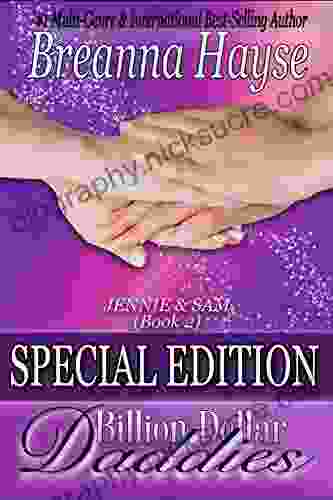
 Eliot FosterUnveiling the Secrets of Success: An Immersive Journey through Billion Dollar...
Eliot FosterUnveiling the Secrets of Success: An Immersive Journey through Billion Dollar...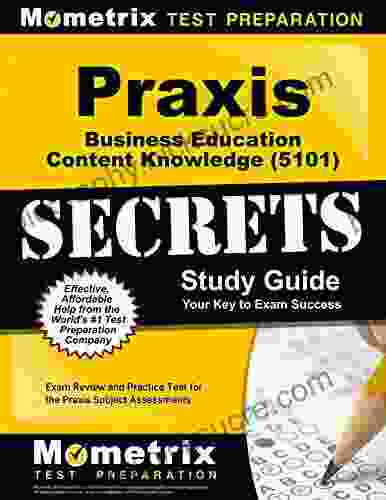
 Javier BellContent Knowledge 5101 Secrets Study Guide Exam Review and Practice Test For:...
Javier BellContent Knowledge 5101 Secrets Study Guide Exam Review and Practice Test For:...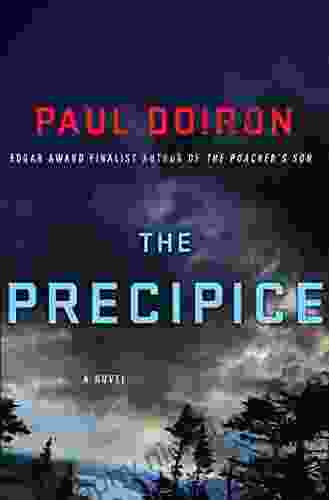
 Darren BlairThe Precipice Novel Mike Bowditch Mysteries: A Thrilling Journey of Crime and...
Darren BlairThe Precipice Novel Mike Bowditch Mysteries: A Thrilling Journey of Crime and... Mikhail BulgakovFollow ·8.5k
Mikhail BulgakovFollow ·8.5k Langston HughesFollow ·3.8k
Langston HughesFollow ·3.8k T.S. EliotFollow ·4.8k
T.S. EliotFollow ·4.8k Dion ReedFollow ·6.1k
Dion ReedFollow ·6.1k José MartíFollow ·6.2k
José MartíFollow ·6.2k Matthew WardFollow ·15.3k
Matthew WardFollow ·15.3k Michael CrichtonFollow ·2.5k
Michael CrichtonFollow ·2.5k Junot DíazFollow ·7.9k
Junot DíazFollow ·7.9k
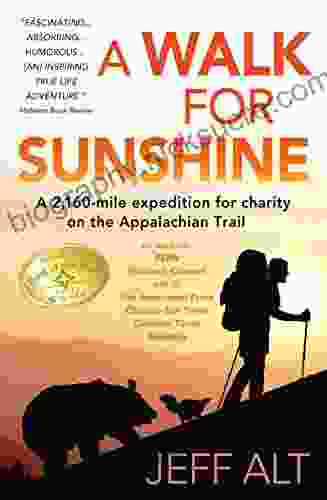
 Israel Bell
Israel BellEmbark on an Epic 160-Mile Expedition for Charity on the...
Prepare yourself for an...
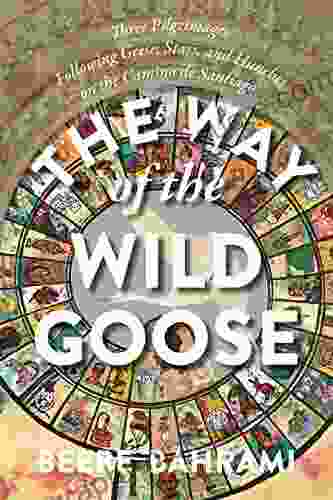
 Josh Carter
Josh CarterThe Way of the Wild Goose: A Journey of Embodied Wisdom...
The Way of the Wild Goose is an ancient...

 Allen Parker
Allen ParkerMastering the Art of Bean Fly Casting: A Comprehensive...
Fly fishing,...
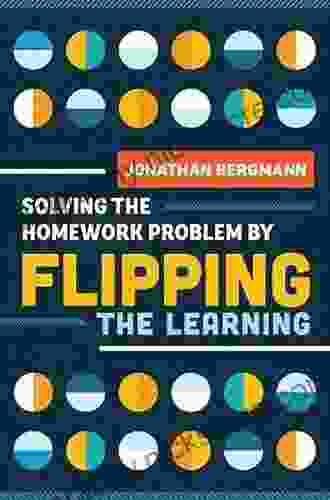
 Aaron Brooks
Aaron BrooksSolving the Homework Problem by Flipping the Learning
What is flipped...

 Fletcher Mitchell
Fletcher MitchellThe Jane Butel Library: A Renewed Source of Knowledge and...
The Jane Butel...
4.6 out of 5
| Language | : | English |
| File size | : | 2944 KB |
| Text-to-Speech | : | Enabled |
| Screen Reader | : | Supported |
| Enhanced typesetting | : | Enabled |
| Word Wise | : | Enabled |
| Print length | : | 178 pages |
| Lending | : | Enabled |


